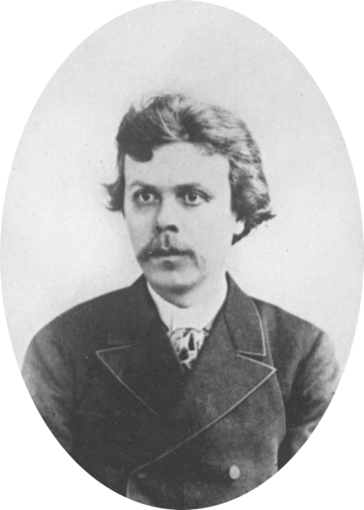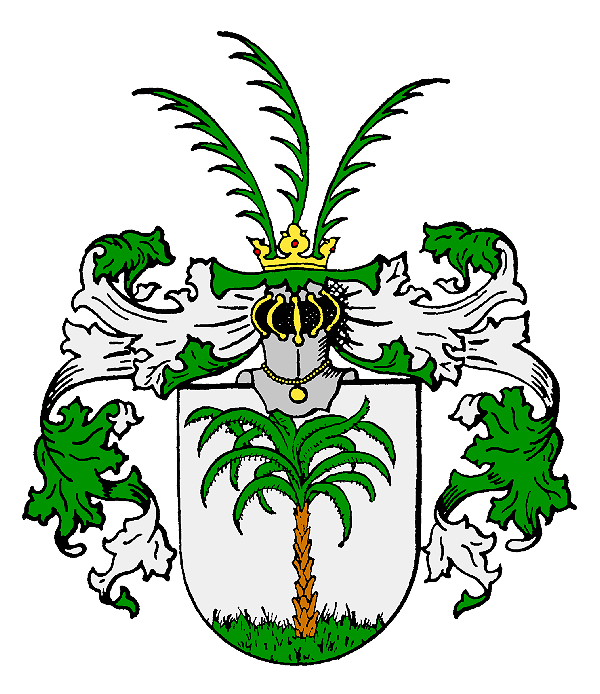|
Schizothorax Zarudnyi
''Schizothorax zarudnyi'' is a species of cyprinid freshwater fish from Iran and Afghanistan, where restricted to lakes in the Sistan Basin.Coad, B.; and J. Hales (2008)Helmand - Sistan.Freshwater Ecoregions of the World. Retrieved 18 May 2019. Etymology The fish is named in honor of Nikolai Zarudny Nikolai Alekseyvich Zarudny (russian: Николай Алексеевич Зарудный; rus, Николай Алексеевич Зарудный, r=Nikolay Alekseevich Zarudny. His name has been transliterated a number of other ways; especial ... (1859-1919), a Ukrainian-Russian explorer and ornithologist, who collected the holotype specimens. References Schizothorax Fish described in 1897 Taxa named by Alexander Nikolsky {{Schizothorax-stub ... [...More Info...] [...Related Items...] OR: [Wikipedia] [Google] [Baidu] |
Alexander Mikhailovich Nikolsky
Alexander Mikhailovich Nikolsky (Russian: Александр Михайлович Никольский; February 18, 1858 – December 8, 1942) was a Russian and Ukrainian zoologist born in Astrakhan. From 1877 to 1881, he studied at the University of St. Petersburg, earning his doctorate several years later in 1887. From 1881 to 1891, he took part in numerous expeditions to Siberia, the Caucasus, Persia, Japan, et al. In 1887 he became an associate professor in St. Petersburg, later becoming director of the herpetology department at the Zoological Museum of the Academy of Sciences (1895). In 1903 he relocated as a professor to the Kharkiv University. In 1919 he was elected a member at the Academy of Sciences of Ukraine. Among his written works were ''Herpetologia Caucasica'' (1913), and volumes on reptiles and amphibians that were part of the series "Fauna of Russia and Adjacent Countries". He is the taxonomic authority of 26 reptile species. The viper '' Vipera nikolskii'' ... [...More Info...] [...Related Items...] OR: [Wikipedia] [Google] [Baidu] |
Alexander Keyserling
Alexander Friedrich Michael Lebrecht Nikolaus Arthur Graf von Keyserling (15 August 1815 – 8 May 1891) was a Baltic German geologist and paleontologist from the Keyserlingk family of Baltic German nobility. Career Alexander von Keyserling was born on at the Kabillen Manor, , Courland Governorate (in present-day Kabile, Kuldīga Municipality, Latvia), then part of the Russian Empire. His father was Count Heinrich Diedrich Wilhelm von Keyserling, 3rd Count of Rautenburg, was a spokesman, and in Courland, his mother was Baroness Anna Amalie Benigna . His family was of Westphalian origin and was originated in Herford, they were considered part of the ''Uradel'', or old nobility. The first ever mentioned member was Albert Keserlink (1443-1467 or 1468), the mayor of Herford. Alexander belonged to the ''House of Rautenburg- Telsen-Paddern'', which was a subdivided branch of the Prussian comital branch. The branch's founder Dietrich II von Keyserling, Herr auf und , was el ... [...More Info...] [...Related Items...] OR: [Wikipedia] [Google] [Baidu] |
Henry Weed Fowler
Henry Weed Fowler (March 23, 1878 – June 21, 1965) was an American zoologist born in Holmesburg, Pennsylvania. He studied at Stanford University under David Starr Jordan. He joined the Academy of Natural Sciences in Philadelphia and worked as an assistant from 1903 to 1922, associate curator of vertebrates from 1922 to 1934, curator of fish and reptiles from 1934 to 1940 and curator of fish from 1940 to 1965. He published material on numerous topics including crustaceans, birds, reptiles and amphibians, but his most important work was on fish. In 1927 he co-founded the American Society of Ichthyologists and Herpetologists and acted as treasurer until the end of 1927. In 1934 he went to Cuba, alongside Charles Cadwalader (president of the Academy of Natural Sciences of Philadelphia), at the invitation of Ernest Hemingway to study billfishes, he stayed with Hemingway for six weeks and the three men developed a friendship which continued after this trip and Hemingway sent speci ... [...More Info...] [...Related Items...] OR: [Wikipedia] [Google] [Baidu] |
Cyprinid
Cyprinidae is a family of freshwater fish commonly called the carp or minnow family. It includes the carps, the true minnows, and relatives like the barbs and barbels. Cyprinidae is the largest and most diverse fish family and the largest vertebrate animal family in general with about 3,000 species, of which only 1,270 remain extant, divided into about 370 genera. Cyprinids range from about 12 mm in size to the giant barb (''Catlocarpio siamensis''). By genus and species count, the family makes up more than two-thirds of the ostariophysian order Cypriniformes. The family name is derived from the Greek word ( 'carp'). Biology and ecology Cyprinids are stomachless fish with toothless jaws. Even so, food can be effectively chewed by the gill rakers of the specialized last gill bow. These pharyngeal teeth allow the fish to make chewing motions against a chewing plate formed by a bony process of the skull. The pharyngeal teeth are unique to each species and are used by scient ... [...More Info...] [...Related Items...] OR: [Wikipedia] [Google] [Baidu] |
Sistan Basin
The Sistan Basin is an inland endorheic basin encompassing large parts of southwestern Afghanistan and minor parts of southeastern Iran, one of the driest regions in the world and an area subjected to prolonged droughts. Its watershed is a system of rivers flowing from the highlands of Afghanistan into freshwater lakes and marshes and then to its ultimate destination: Afghanistan's saline Godzareh depression, part of the extensive Sistan terminal basin. The Helmand River drains the basin's largest watershed, fed mainly by snowmelt from the mountains of Hindu Kush, but other rivers contribute also. A basalt hill, known as Mount Khajeh, rises beside the lakes and marshes of the basin. Lakes The lowest part of the Sistan Basin contains a series of shallow lakes, known as ''hamuns''. It appears that in the past there was a single Hamun Lake, but there are now three separate lakes. From north to south the lakes are: Hamun-e Puzak The Hamun-e Puzak lies mostly in Afghan ... [...More Info...] [...Related Items...] OR: [Wikipedia] [Google] [Baidu] |
Nikolai Zarudny
Nikolai Alekseyvich Zarudny (russian: Николай Алексеевич Зарудный; rus, Николай Алексеевич Зарудный, r=Nikolay Alekseevich Zarudny. His name has been transliterated a number of other ways; especially with ''Sarudny'' or ''Sarudney'' in older works. 13 September 1859 – 17 March 1919) was a Ukrainian-Russian explorer and zoologist who studied the flora and fauna of Central Asia. He was born in Gryakovo, Ukraine (then part of the Russian Empire). He wrote his first ornithology book in 1896 and made five expeditions in the Caspian region between 1884 and 1892. He led other expeditions to Persia supported by the Russian Geographical Society and the Zoological Museum of the Zoological Institute of the Russian Academy of Sciences. He collected nearly 3,140 specimens of birds and 50,000 insects. After the Russian Revolution, his collection was nationalized by the Bolsheviks and moved to the museum at the University of Tashkent. For his ... [...More Info...] [...Related Items...] OR: [Wikipedia] [Google] [Baidu] |
Schizothorax
''Schizothorax'' is a genus of cyprinid fish found in southern and western China, through northern South Asia (Himalaya) and Central Asia, to Iran, with a single species, ''S. prophylax'', in Turkey.Yang, J.; J.X. Yang; and X.Y. Chen (2012). A re-examination of the molecular phylogeny and biogeography of the genus Schizothorax (Teleostei: Cyprinidae) through enhanced sampling, with emphasis on the species in the Yunnan–Guizhou Plateau, China. Journal of Zoological Systematics and Evolutionary Research 50(3). They are primarily found in highland rivers, streams and lakes, although a few species occur in lower-lying locations, like Lake Balkhash and lakes of the Sistan Basin.Coad, B.; and J. Hales (2008)Helmand - Sistan.Freshwater Ecoregions of the World. Retrieved 18 May 2019. Their scientific name means "cloven-breast", from Ancient Greek () 'to cleave' and () 'breast-plate' (see also thorax). The western species are typically referred to as ''marinkas'' from their Russian nam ... [...More Info...] [...Related Items...] OR: [Wikipedia] [Google] [Baidu] |
Fish Described In 1897
Fish are aquatic, craniate, gill-bearing animals that lack limbs with digits. Included in this definition are the living hagfish, lampreys, and cartilaginous and bony fish as well as various extinct related groups. Approximately 95% of living fish species are ray-finned fish, belonging to the class Actinopterygii, with around 99% of those being teleosts. The earliest organisms that can be classified as fish were soft-bodied chordates that first appeared during the Cambrian period. Although they lacked a true spine, they possessed notochords which allowed them to be more agile than their invertebrate counterparts. Fish would continue to evolve through the Paleozoic era, diversifying into a wide variety of forms. Many fish of the Paleozoic developed placodermi, external armor that protected them from predators. The first fish with jaws appeared in the Silurian period, after which many (such as sharks) became formidable marine predators rather than just the prey of arthropods ... [...More Info...] [...Related Items...] OR: [Wikipedia] [Google] [Baidu] |





